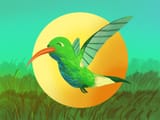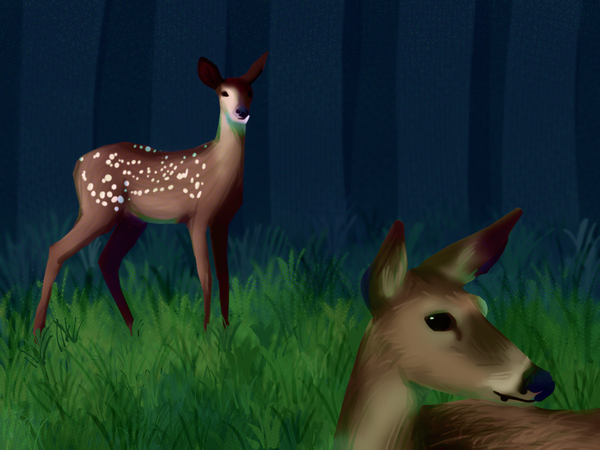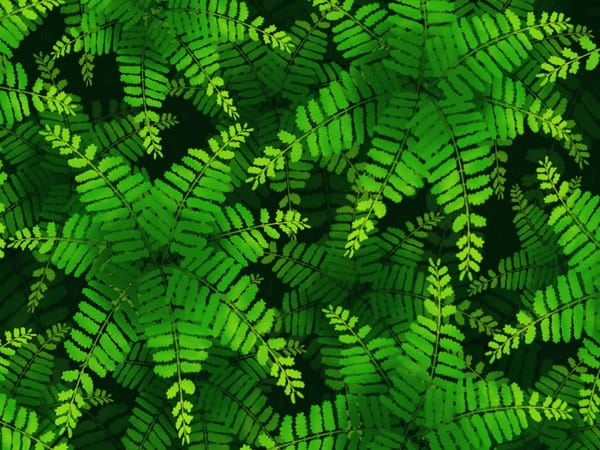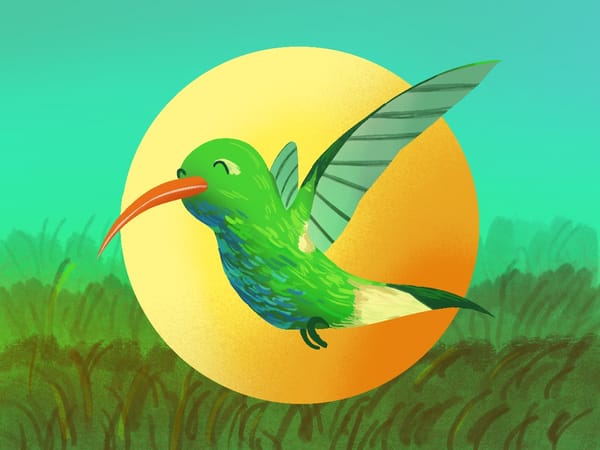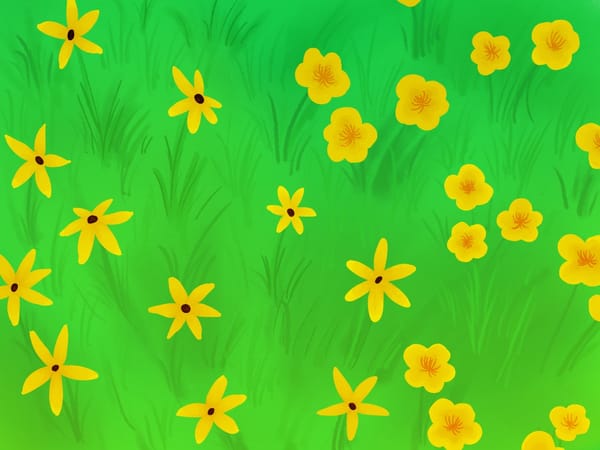Destroying Three Years of Work
This week, I learned how to find plants that are native to my ecoregion and discovered that out of 58 plants I had in the ground, only 10 were native.
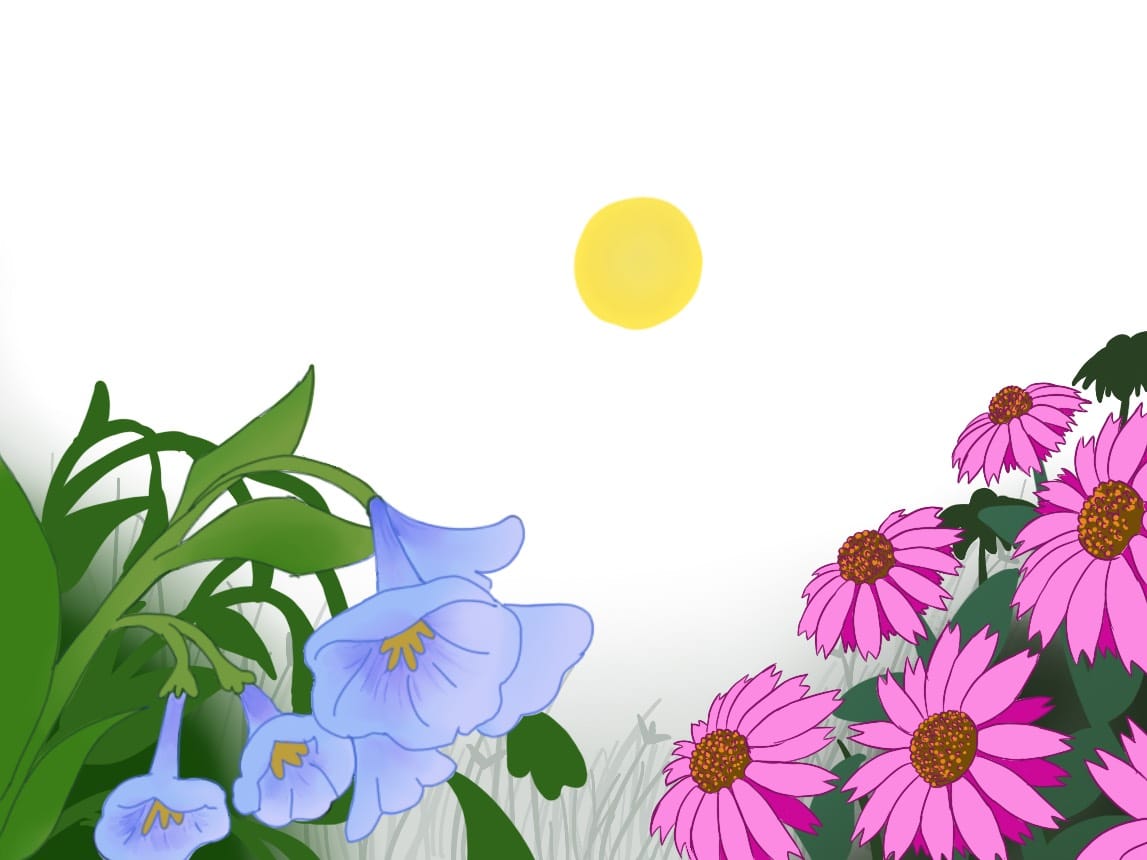
The first thing I needed to do to start planning my new native wildlife garden was determine what plants were actually native in my area. In my initial research, I found this Indiana Native Plant Finder created by the Indiana Native Plant Society.
It was a really helpful starting point, but there just weren't a ton of plants listed that thrived in shade, and a large portion of my garden is fully shaded by this magnificent Sugar Maple.
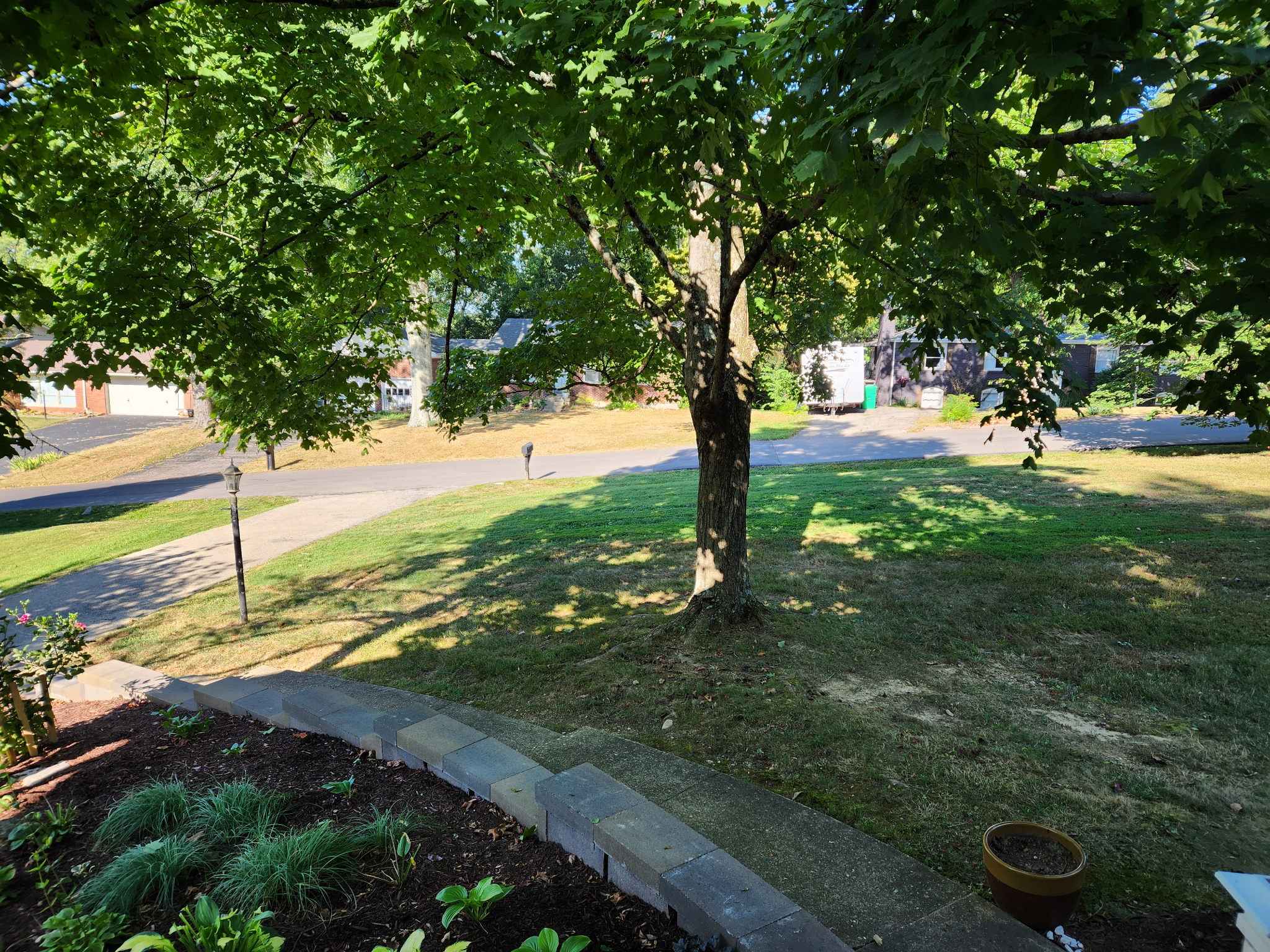
Since I'm just across the river from Kentucky, I wondered if Kentucky native plants would also count as native in my location. Through that investigation, I learned that determining the best native plants for your region is not really a state-by-state thing. The best way to do it is to find your ecoregion.
To determine my ecoregion, I used bplant.org, which is an incredible resource. You can use their Ecoregion Locator to determine your ecoregion by typing in your address. Mine, as I learned, is Interior Plateau (which, as I suspected, includes my area in Indiana and nearby parts of Kentucky — but interestingly not all areas of either state).
Once you know your ecoregion, you can use bplant's plant finder to 1. search for specific plants to see if they're native in that ecoregion or 2. view a list of all native plants for your ecoregion. Excited to dig in, I clicked a link to view all of the native plants in the Interior Plateau.
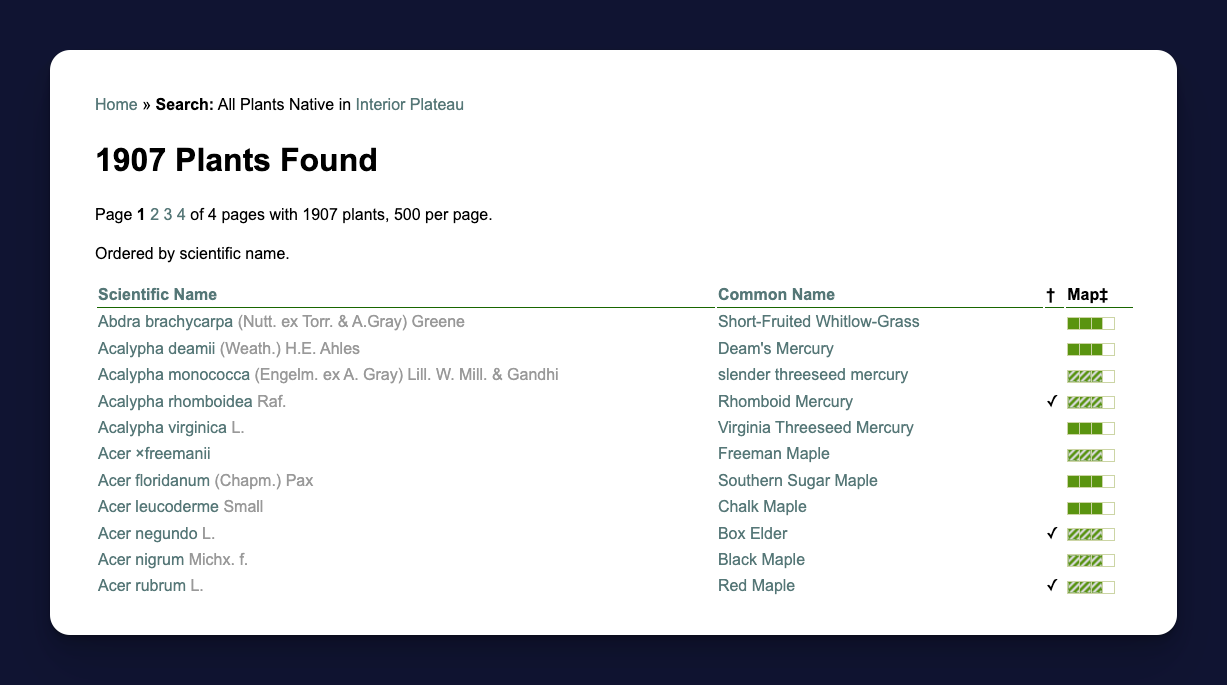
It listed 1,907 plants. In good news, I definitely had more options than what I found in the Indiana Native Plant Finder. In more overwhelming news, that's a lot of options.
I comforted myself by deciding to just take things one step at a time instead of spending the next several weeks clicking through pages describing nearly 2,000 plants.
A clear (but not necessarily easy) first step felt like determining which of the things I'd already planted were native to my ecoregion. If I'd been better about labeling what I planted over the last three years, it would have been simple, but I was not good about it.
Thankfully, I'd purchased a number of my plants online, so I was able to go back into my order history, match the pictures to the plants in my garden, and get a list of the names of all of those. For the others, I had to rely on Google Lens for identification. It actually worked really well.
I decided that for anything that was questionable — i.e., not very clearly what Google Lens was telling me it was — I would just assume it wasn't native. I want to do this right.
With my full list of existing garden plants compiled, I came back to bplant's plant finder and started searching.
It was brutal. Brutal.
Of the 58 different plants I planted (and didn't kill) over the last three years, 10 were native. Ten.
And nine of those natives were plants I just purchased this year after I started learning about the importance of native gardening. Out of everything I bought prior to learning about native gardening, I had one single plant — a green Heuchera — that was native to my area.
A few of the things I had in the ground were highly invasive too. Some I planted (St. John's Wort, Butterfly Bush) and some were here when I moved in (Burning Bush and so many Day Lillies that I think I'll still be trying to get rid of 10 years from now).
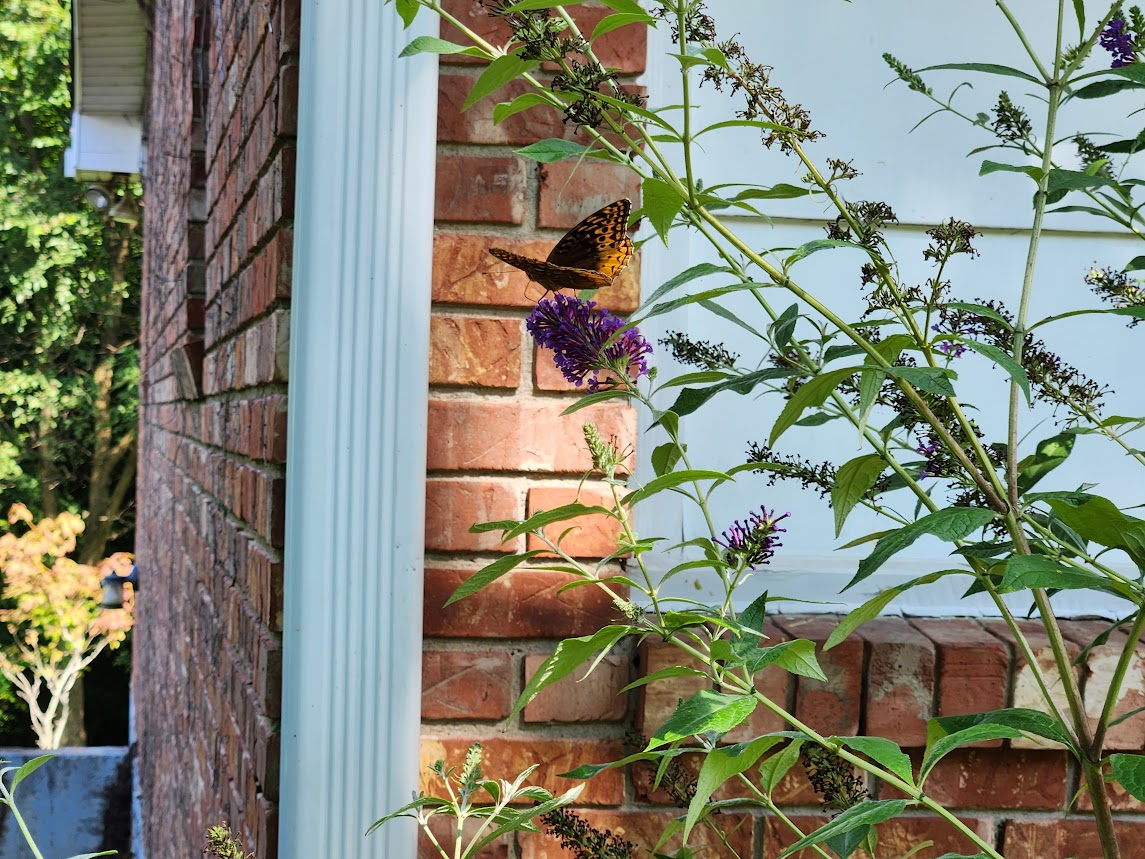
The most frustrating thing of all for me was finding out that there are native versions of a lot of the plants I had in the ground. The invasive St. John's Wort I planted (that I got from a local nursery): there's a native version of it that's just as beautiful. My Hydrangea: it native to Asia even though there are several Hydrangeas that are native to my area.
To be honest, I had to take a pause for a few days after discovering that I was going to have to basically start over from scratch with my garden. A not insignificant part of me wanted to just keep what I had and be better about seeking out native plants going forward.
But after my brief period of grieving, I was able to get my thoughts back on track. There's not a lot I can do to help the environment, but this is something I can do. And while I wish that I would have accidentally ended up with a few more native plants in the ground over the years, I didn't. What's done is done.
"Maybe if I do this the right way and if I write about my journey online," I thought, "I can help educate others about native gardening so they can avoid the mistakes I've made." So here I am.
I also worked on replacing my negative thoughts with positive ones, thinking about the beautiful new garden I would create rather than lamenting what I was going to have to remove.
After all, buying plants always cheers me up.
But new plants is a topic I'll cover later. If you want to keep following along, make sure to subscribe below!
